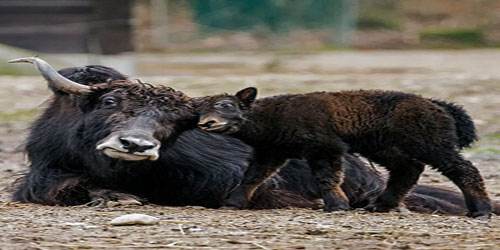
Small Scale Yak Farming Frequently Asked Questions Here are 15 frequently asked questions about small scale yak farming:Yaks are herbivores and primarily graze on grass, shrubs, and other vegetation. In winter or during periods of snow, supplemental feeding with hay or silage may be necessary. Startup costs vary depending on land, fencing, and initial yak purchase. Yaks themselves can be expensive, but they require less intensive care, reducing long-term costs. Yaks typically live 15-20 years, and some can live even longer with proper care. Yaks are well-adapted to cold, high-altitude climates but can thrive in cooler temperate climates with proper shelter and care. A female yak can produce 1-2 liters of milk per day, depending on the breed and diet, which can be used for drinking or making dairy products. Yak meat is lean, tender, and flavorful, often described as more flavorful than beef. It is considered a premium meat in many markets. Yak wool (qiviut) is soft, lightweight, and warm. It is used in high-end textiles like scarves, sweaters, and gloves, often fetching high prices. Yes, yaks can be raised for both milk and meat, providing a diversified income stream for small-scale farmers. For beginners, a herd of 5-10 yaks is often manageable. This allows for learning the farming process and scaling up as experience grows. Yaks need significant space for grazing and roaming. Depending on the environment, they may require 1-2 acres of land per yak to thrive. Yes, yak farming can be profitable, especially with a focus on niche products like high-quality meat, milk, wool, and hides, which have growing demand. Challenges include weather conditions, managing grazing land, and the initial investment in yaks. However, yaks' hardiness makes them easier to manage than many other livestock in tough conditions. Yaks can be bred naturally or through artificial insemination. Breeding yaks requires understanding their reproductive cycles and ensuring that both the male and female are healthy. Yes, yaks can be successfully raised in non-traditional areas, as long as the climate is cool enough, and adequate care and shelter are provided. Marketing yak products can be done through local markets, niche food stores, online platforms, or by connecting with specialty product retailers. Emphasizing their organic and sustainable qualities can also attract premium buyers. "Want To Raise Healthy Yaks? Get Gerard Dawn's Ebook That Will Guide You On How To Raise Healthy Profitable Yaks For Meat, Fiber Or Milk In Your Own Farm Yard Even If You're Just Starting Out In Yak Farming..." |
How To Raise Yaks Contact Us Terms of Use Privacy Policy About Us FAQ Site Map
